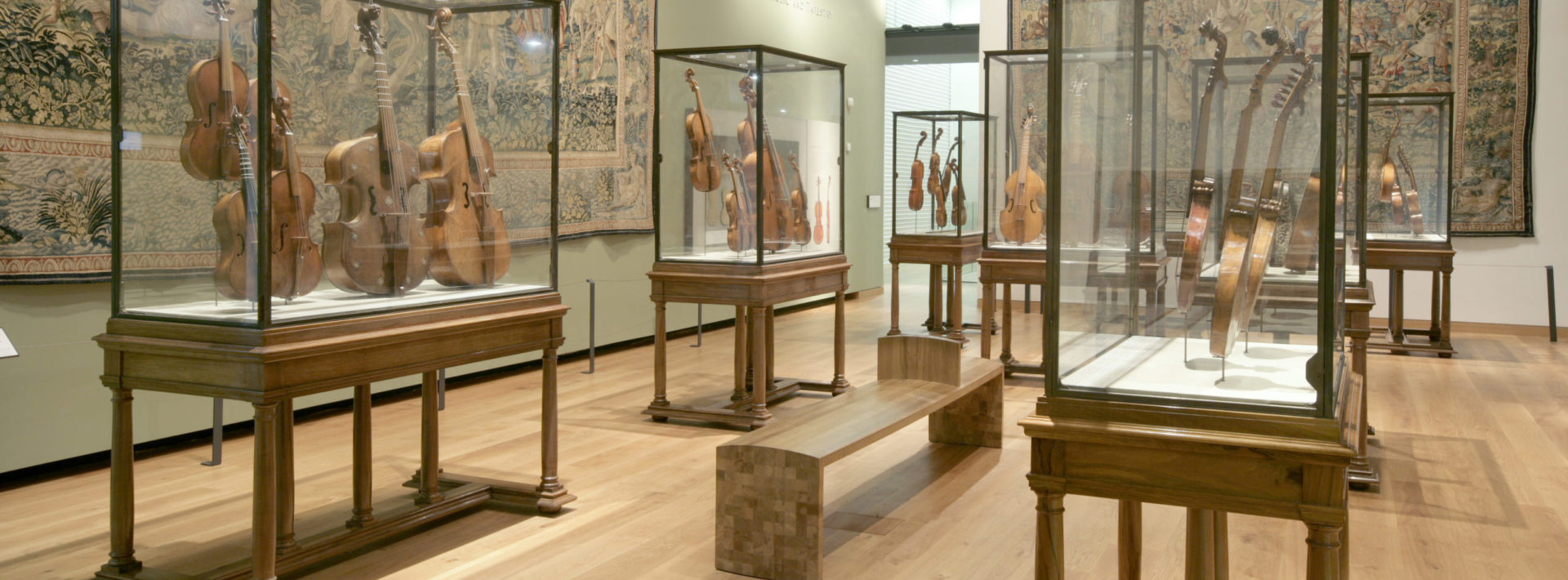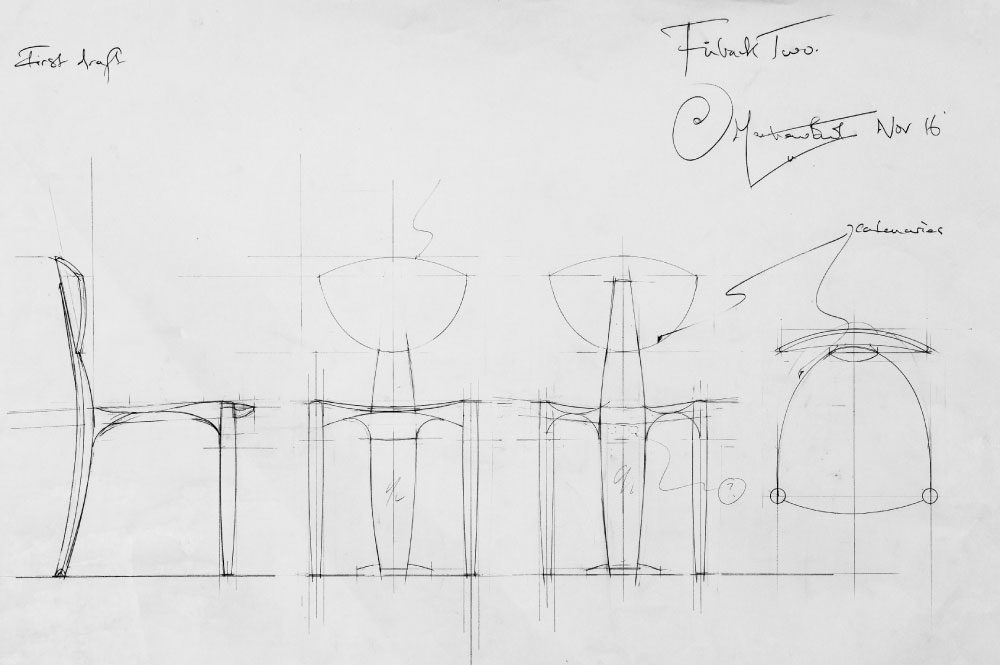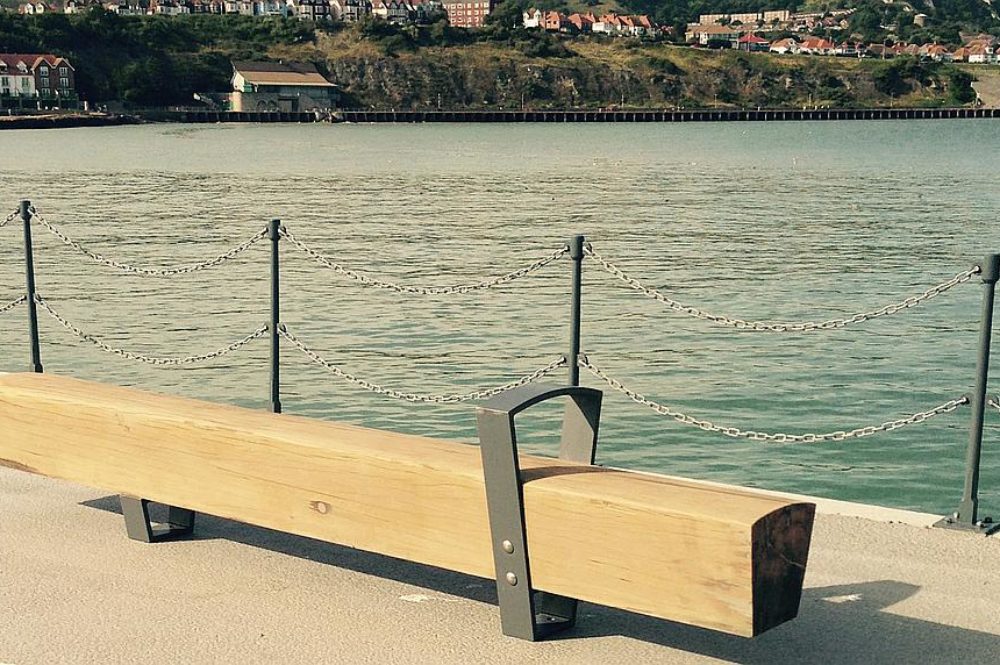INSIGHTS
Ashmolean Museum Bench
I was very flattered to be amongst the eighteen or so designer-makers long listed by the Ashmolean and invited to a ‘briefing’ visit to the building site that was to be the new extension. Like most briefs, it had about it elements of the impossible. Seats must fit all sizes, for all occasions, in all situations. The element of the impossible is where the excitement resides.
My response, as with all my design work, sought to answer not only the client’s brief but to over-layer it with my own design aspirations which loosely go along the lines of the following: remain appropriate to the brief, speak of our times, add something to overall design evolution, use materials responsibly and expressively, all resulting in an enduring design and enduringly constructed.
The proposal I submitted consisted of two elements, which would hopefully combine into a third that would bowl over the selection panel. The first element had about it a conceptual tweak and I called it ‘looking into time’. The ‘legs’ that were to support the seating surface would consist of stacked end-grain blocks. Looking into end-grain is looking into the time taken to grow the material. This seemed metaphorically appropriate and in tune with the museum.
The second element was to be a succinctness of construction detail using the conceptual building blocks. Each end-grain stack was to consist of ten rows of ten blocks each measuring 40mm by 40mm. These in turn would support at each end ten staves 40mm thick and of sufficient length to sit four to five people. The upper surface of the ten staves was to be sculpted into a convex shape. When it comes to comfort, this shape is seemingly counter-intuitive; however, it is the back half of the curve that provides it. If you have any doubts, pop along and sit on the benches to test out the theory. This comfort of the convex curve was hopefully going to provide a sensuality to the design. The succinctness and sensuality would be combined further in the reciprocation of the upper surface’s convex curve on its underside, which would give it an aerofoil shape in cross section, 96mm thick at its centre and thus providing sufficient beam strength to support five or six people, without the need for additional under-frame support.
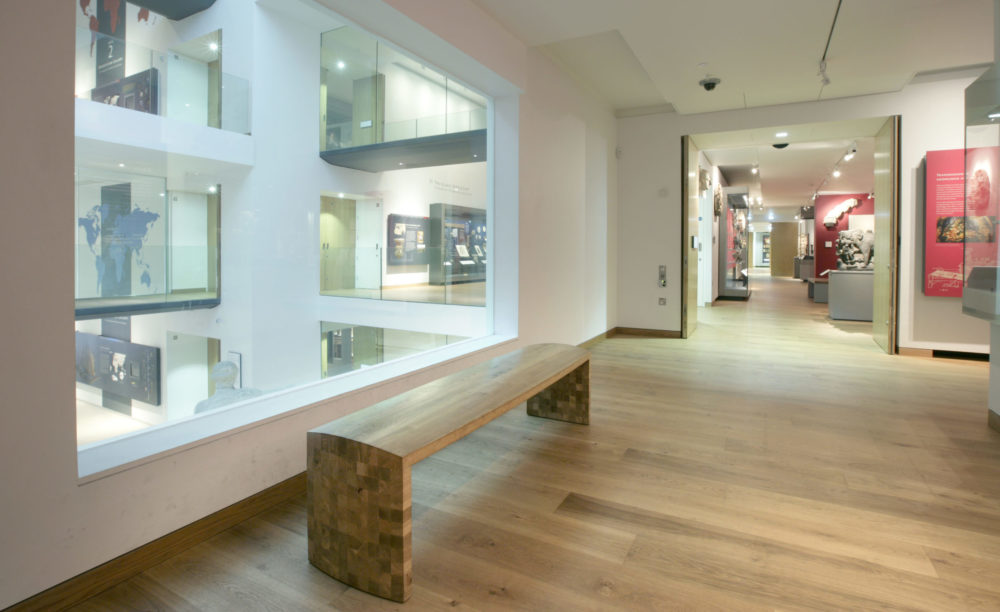
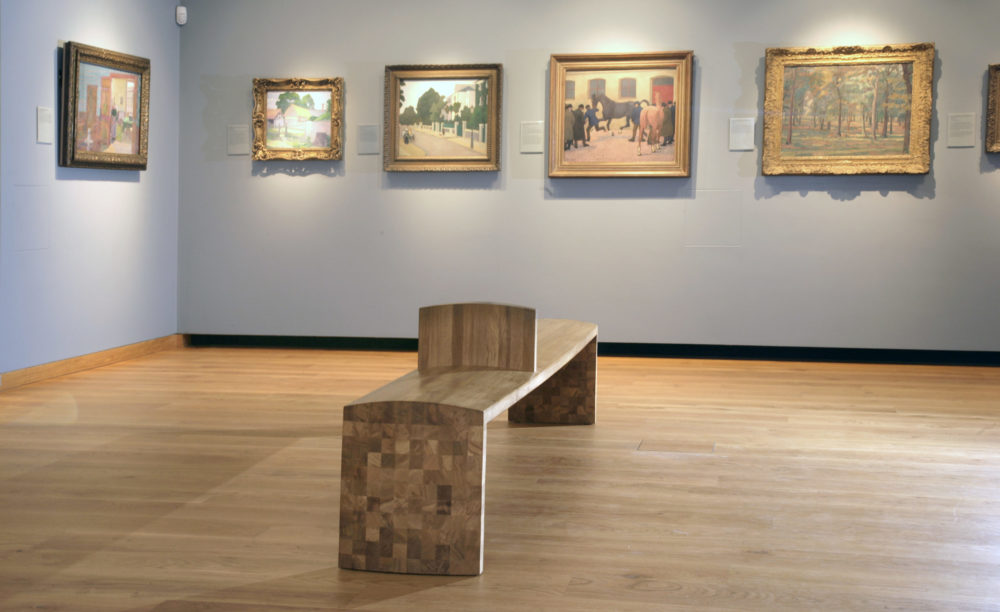
The successful combination of the conceptual (end-grain blocks) with the succinctness of constructional detail was the third element of the design: a different form of construction. The strongest joint available to woodworkers is a face grain to face grain gluing surface. In the benches there were to be no mortice and tenons, no housings or half lap joints, just face grain to face grain adhesion. Thus the whole structure was to be a single joint which would achieve immense robustness to enable the bench to expand and contract with the changes in ambient moisture content and hence endure.
The timber chosen for the benches is grown at Aconbury Wood in Herefordshire, a Duchy woodland which is subject to the exacting management systems of cropping and replenishment insisted upon by its owners. Its provenance is known and recorded and it shares, along with most English woodlands, a less aggressive management than continental or North American timber. Thus the trees are often smaller with more branches, ‘faults’ and knots. By making the benches out of smaller end-grain blocks and narrow staves that are reconfigured into larger surfaces, we are able to be more intentionally economic in our use of the tree and we are able to use more of it than would be the case if we used the larger boards only.
The august body of eight individuals representing the Museum, the architects, the Worshipful Company of Furniture Makers and the Friends of the Ashmolean who sat in assessment of the long list and then the shortlist of proposals, certainly put me on my mettle. In the words of their spokesperson, they were minded to select me, and I am deeply indebted to their faith in me and my designs.
I have been infatuated with trees and timber my whole life and, as a designer maker, I’ve always sought to memorialise them through my furniture. I’ll leave you to judge if I’ve succeeded with the Ashmolean benches.
SIMILAR ARTICLES
Finback Chair
We are enormously proud and very flattered that a pair of our ‘Finback’ chairs were commissioned by Sir Nicholas and Lady Goodison for the permanent collection of 20-21st Century British crafts which they have given to the Fitzwilliam Museum through the Art Fund…
Folkestone Harbour
This commission to create thirty-two benches from recycled harbour fenders was certainly a first and presented us with a brief we could not resist…

